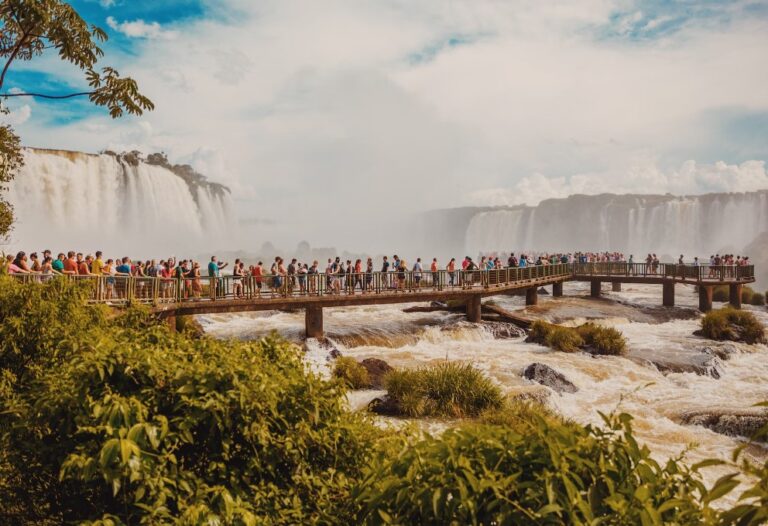The specialty of a famous location is to attract people around the globe. Along with tourists, it also attracts development, economic growth, and recognition. It is not only the local community but the government itself that builds business models to use that population.
But as tourist hotspots become increasingly congested, pristine natural landscapes transform into bustling commercial zones. And cultural heritage sites encounter wear and tear, so it becomes imperative to delve into the repercussions of this exponential growth in tourism.
Table of Contents
What is mass tourism?
Mass tourism is the word used to describe the phenomenon when a large number of tourists visit a particular destination. All tourists must visit the place at the exact time of the year—multiple factors, including national attractions, recreational activities, and cultural heritage, influence this phenomenon.
This is a predictable phenomenon as the attraction of tourists is directed to a common attraction point. The point of attraction can be the relaxation environment, for instance, the presence of beaches or hill stations in the hot summer. It can be a very famous festival or occasion. These phenomena are also influenced by holidays, which are not directly influenced by the location.
This moment is highly supported by the government and local communities as it has a huge contribution to the economy. Not only government bodies but also the local vendors and small businesses present in the location receive heavy profits. The price of products available also spiked due to high demand.
Places like the Great Wall of China, the Taj Mahal of India, and Phi Phi Island of Thailand are some places experiencing mass tourism throughout the year. But a very important question arises–are these locations comfortable enough to withstand these massive crowds despite their significant economic contribution? We will check further.
Read more: Regenerative tourism: how to travel while improving nature
Negative effects of mass tourism on the environment
Every tourist place has a capacity beyond which it can’t handle the crowd or activity surrounding it. It is not even possible for the government itself to go beyond that point to manage tourists. This results in many negative impacts on famous tourist places. The Great Wall of China has disappeared 30% due to human causes and overcrowding.
UNESCO has published their views on the pathetic condition when places like Machu Picchu in Peru are receiving 1 million plus visitors each year. Let’s check what other negative impacts of mass tourism are.
1. Pollution and waste
Pollution and waste is the first and biggest concern due to mass tourism. A mass tourism event can significantly increase CO2 emissions. Along with this, transport and emissions from energy used are responsible for global warming and acid rain. Mass tourism is the big reason behind heavy traffic, and it is directly proportional to the emission of harmful gases.
2. Overcrowding
Overcrowding can lead to mismanagement of all planning made by the tourism team, including- stay, food, and cleanliness. It can be the reason for the exploitation of resources. It unnecessarily increases the price of products
3. Depletion of natural resources
Tourism influences the depletion of natural resources like water and wildlife mostly. Lavious use of water in hotels and resorts for swimming pools and golf courses is demanding more water than basic requirements. Along with this, a sudden spike in electricity and fuel consumption can be noticed due to mass tourism.
Solutions to mitigate the negative impacts
To mitigate the negative impacts of mass tourism, several solutions can be implemented:
Sustainable tourism practices
Sustainability is an unavoidable benchmark to save resources as well as the rich heritage. Starting from the travel, sustainable travel takes account of the current and future economy, environmental impact, and energy consumption. Proper guidelines should be enforced to maintain the resource conservation motives.
Limiting the number of tourists
A tourist place must have capacity guidelines; beyond that, no visitor is allowed. Limitations in the visiting tourists will also promote scattering the visit times, intervals, and frequency. There are other provisions that we can follow: implementing visitor quotas, implementing reservation systems, or introducing peak-season pricing.
Diversifying the tourism industry
Tourism attracts multiple income sources and economic upliftment. The local bodies, along with the government, should plan to diversify the tourism industry and find new, unique ways to serve the tourists to expand the economy. It is not always necessary to rely solely on mass tourism. Diversification of the tourism industry will surely reduce the strain on famous tourist places.
Community involvement and empowerment
The local community present near the tourist place plays a very pivotal role in managing the tourist. They can collectively put efforts to ensure the protection of natural resources and safeguard the exploitation of energy. They can be involved in initiatives such as community-based tourism, where local communities have control over tourism activities and receive direct economic benefits.
Read more: The top 10 most visited countries worldwide: the ranking












